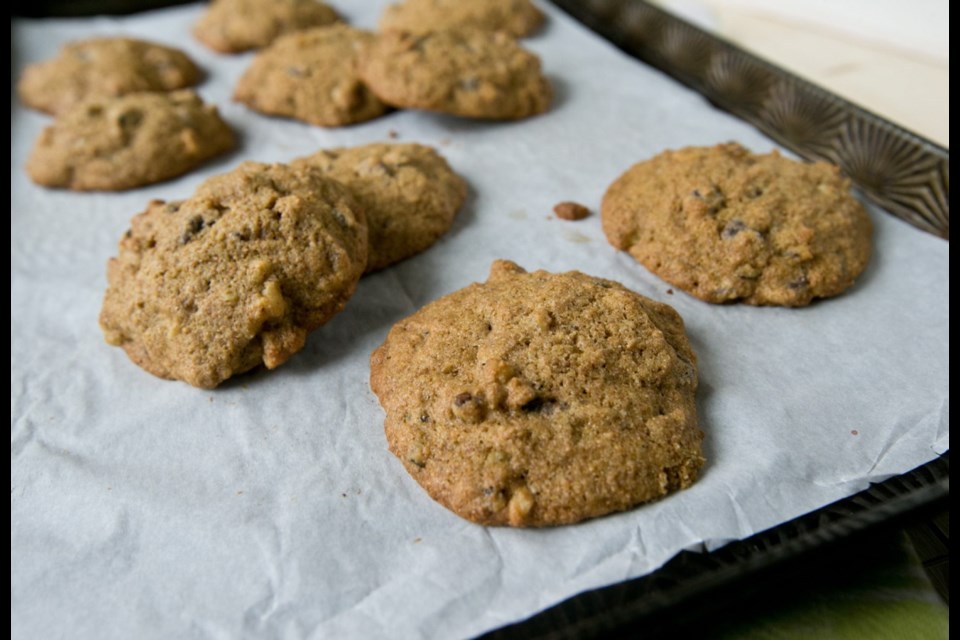Dear Eric: What is the difference between parchment paper and wax paper? Maria
Dear Maria: Although parchment paper and wax — or waxed — paper look somewhat alike, they are very different in composition and that fact determines how they’re best used.
Wax paper has been in use for more than a century and sources suggest Frenchman Gustave Le Gray invented it in 1851.
Le Gray was a photographer and he used this translucent, wax-coated paper for hand-colouration, which allowed the colour from the back of the photograph to be seen from the front.
This process revolutionized photography, and because the wax made the paper water- and grease-proof, it also proved to be a magical product to use in kitchens.
Before the advent of plastic wrap, waxed paper was invaluable for wrapping foods, such as sandwiches for a picnic, to keep them from drying out.
Waxed paper is still used to wrap foods, but over time cooks discovered all sorts of other ways to use it. For example, if you’re dipping strawberries in chocolate or making sticky candy, you can place pieces on wax paper’s non-stick surface — they easily lift off once set.
That non-stick surface is great for rolling sticky dough, making it easier to transfer it to the pan. Sheets of wax paper are also great for stacking and layering prone-to-sticking cookies, bars or other sweets in containers before storing or freezing.
Wax paper can also be used to line a kitchen counter to make cleanup easier when doing a messy task, such as grating a pile of cheese, breading foods or coating the side of a cake with chocolate shavings.
Wax paper maker Reynolds (reynoldskitchens.com) says you can use wax paper to cover foods in the microwave to prevent splatters. They note that wax paper may also be used to line baking pans for cakes, quick breads or any baked food in which the batter completely covers the wax-paper lining.
The website stresses that wax paper should never be directly exposed to the heat of an oven as the wax — the same stuff used for candles — could smoke and even ignite. So don’t use wax paper to bake cookies, biscuits or other items where any of the wax paper is exposed to oxygen in the hot oven.
Parchment paper, also known as silicone paper, is a high-density, moisture-resistant paper that can be used as you would wax paper. But because its non-stick coating won’t easily ignite in the oven, it can be used to line baking sheets for cookies and other things where the paper is exposed to oxygen. It can also be used to cook foods “en papillote,” where foods, such as fish and flavourings, are sealed inside the paper and baked.
In the past, I have read sources and tried recipes that involved using parchment paper at oven temperatures up to 450 F. But according to Reynolds, which also makes parchment paper, it can be used in a conventional oven, convection oven or toaster oven at temperatures up to only 420 F. They say to always preheat the oven and, for safety, never touch the parchment paper to the heating element as that could — and likely will — make it ignite.
Whole Grain Chocolate Chip Cookies with Walnuts
Whole grain flour adds fibre to these cookies, still divinely flavoured with chocolate chips, walnuts and butter.
Preparation time: 20 minutes
Cooking time: 15 minutes per cookie sheet
Makes: 18 to 22 cookies
1 1Ú4 cups whole grain flour (see Note)
1Ú2 tsp baking soda
1 1/4 cups semi sweet chocolate chips
1/2 cup chopped walnuts
1Ú2 cup butter, at room temperature
3Ú4 cup packed golden brown sugar
1 tsp pure vanilla extract
2 large eggs
Place an oven rack in the middle position. Preheat the oven to 325 F. Line 2 large baking sheets with parchment paper.
Place the flour and baking soda in a bowl and whisk to combine; stir in the chocolate chips and nuts.
In another bowl, beat the butter, brown sugar and vanilla until well combined, about three to four minutes. Beat in the eggs, one at a time. Add the flour mixture and mix until just combined.
Drop 2 Tbsp, neat, low mounds of the dough — they’ll spread when they cook — on the baking sheets, spacing about three inches apart. Bake cookies, one sheet at a time, for 15 minutes, or until rich brown and set. Cool on a rack, then store in an airtight container at room temperature for up to two weeks.
Note: The fine-ground whole grain flour I used in this recipe was Anita’s Fresh Stone Ground Whole Wheat Flour. It’s sold in the baking aisle of some supermarkets. If you can’t find it, you could regular whole wheat flour in this recipe.
Eric Akis is the author of the hardcover book Everyone Can Cook Everything. His columns appear in the Life section Wednesday and Sunday.



